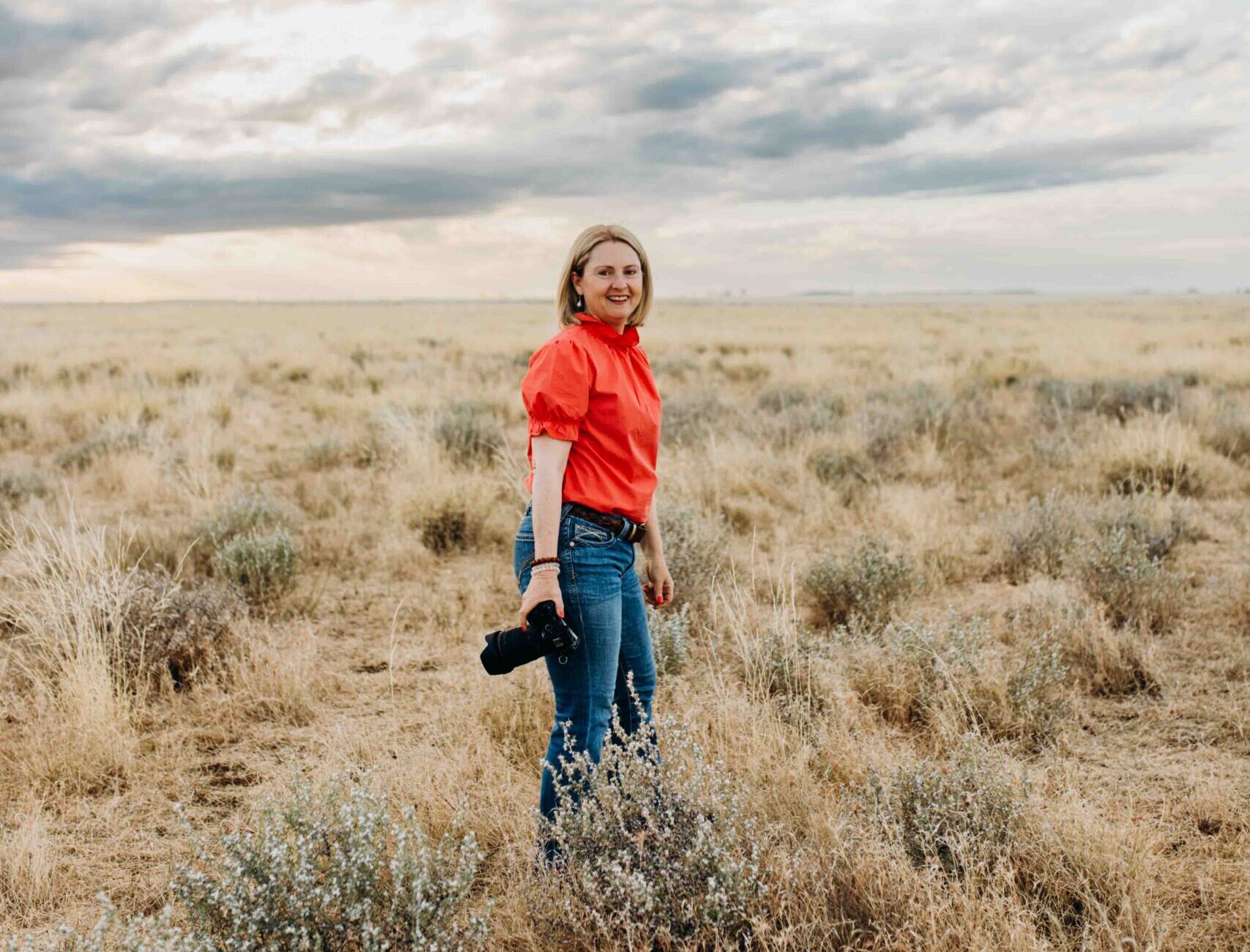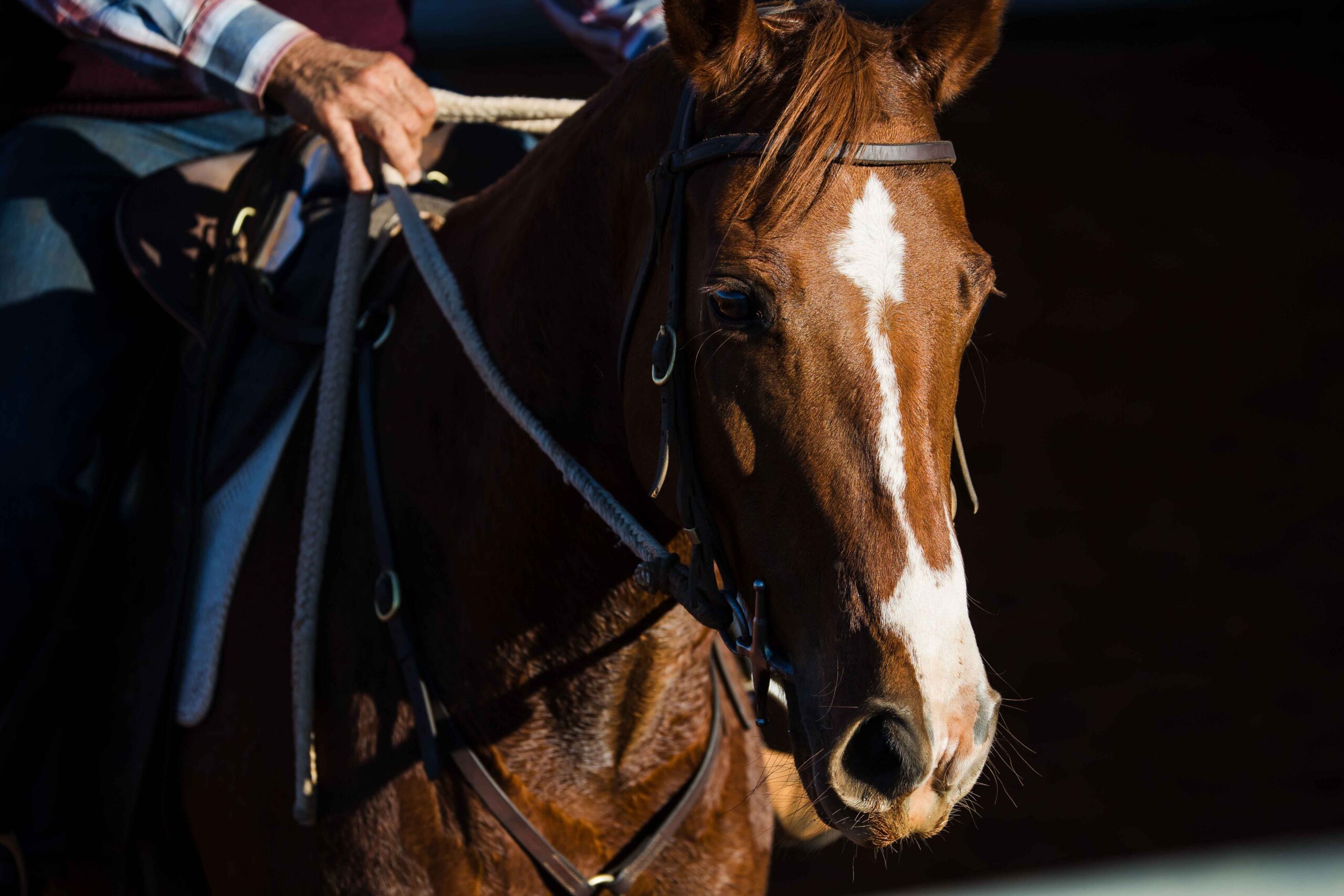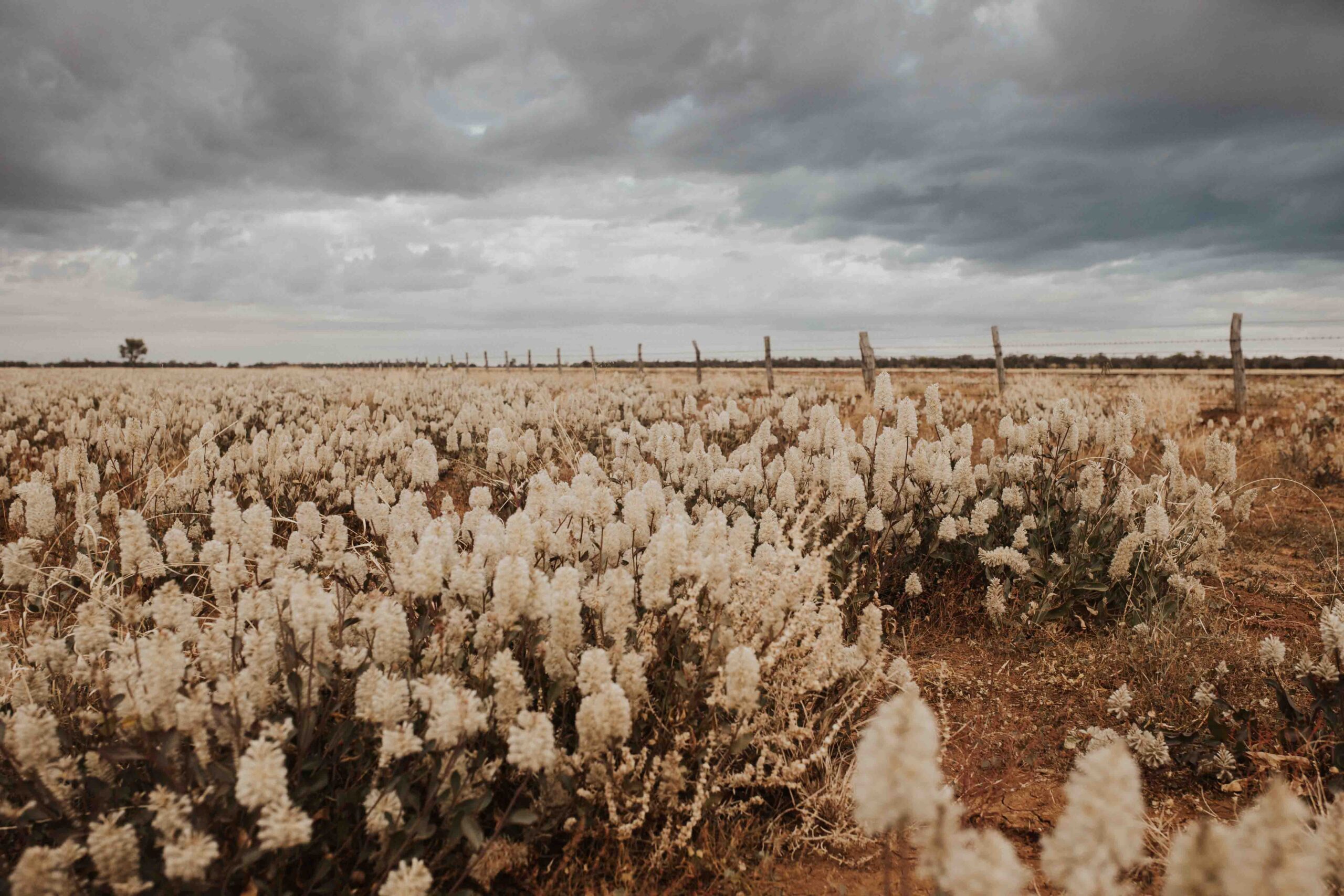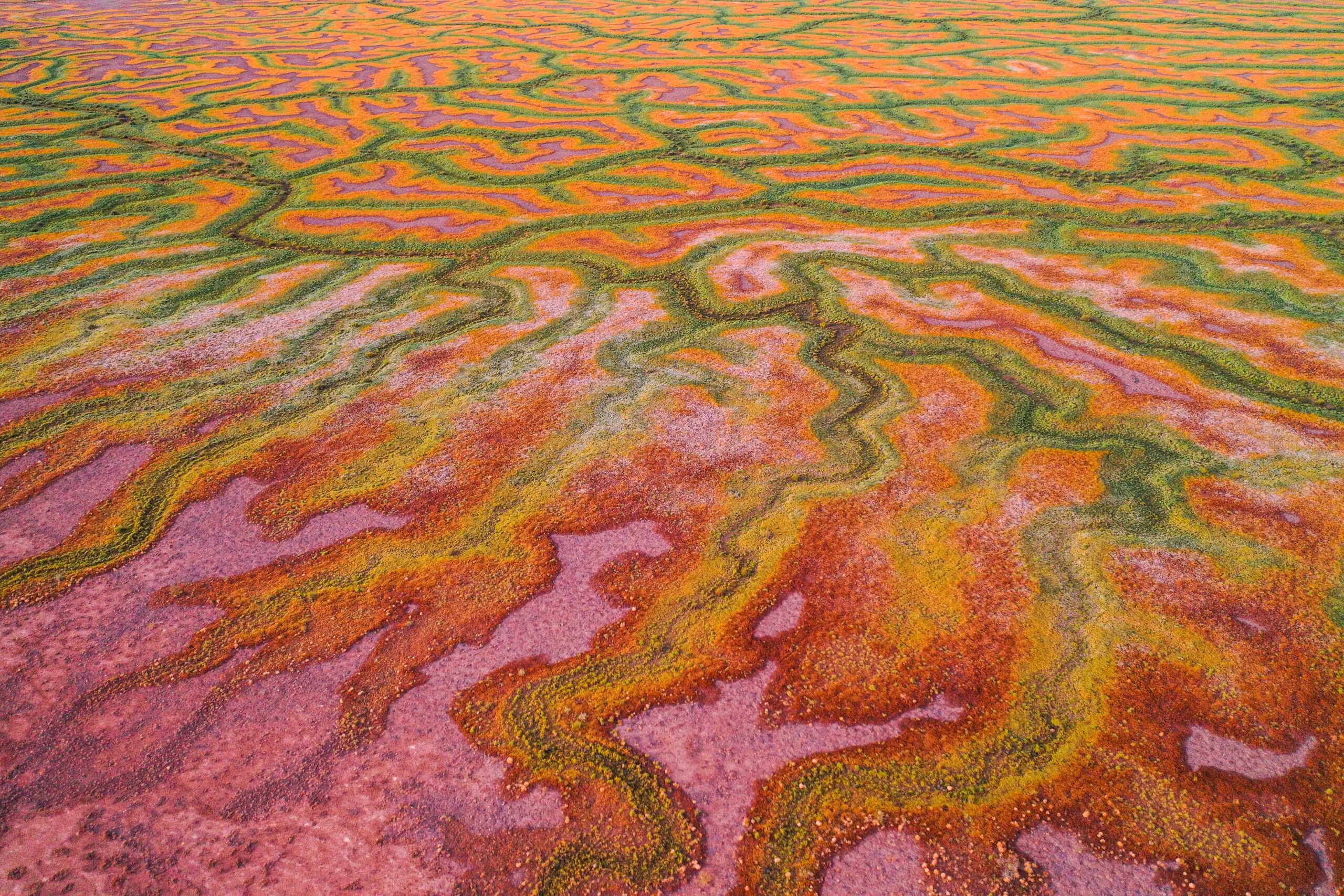Sign up to our mailing list for the best stories delivered to your inbox.
Meet the fifth-generation sheep and cattle farmer behind the image selected for the 2026 Graziher wall planner, which comes free with the next issue.
Photography Lisa Alexander Portrait britt beetson

Her award-winning photograph ‘The Channel Country Comes Alive’ (top of page) has been selected as the image for our 2026 wall planner, which comes free with Issue 48 (on sale early December; subscribe before midnight 16 November and your subscription will begin with Issue 48). Taken just after rain, Lisa’s photograph captures that fleeting, magical moment when the red dirt blushes under a pastel sky and the water lying across the floodplains reflects it in shades of rose and mauve. It’s a photograph that feels both real and dreamlike — a love letter to an outback that’s rarely seen this way.
Lisa lives on a 9300 hectare sheep and cattle property near Blackall, Queensland. She and her husband, Bruce, have been there for 27 years, raising children Will, 25, and Rosie, 23, who both now work in the ag industry. She talked to us about her life and career highlights.

When did you first pick up a camera?
I have always been the girl who carried the camera around, even travelling overseas. I think my first exposure to photography was my mum setting up a darkroom in our laundry when I was a kid. She would develop film that she had taken of us at pony club or whatever we happened to be doing at the time. I found the process fascinating. I am part of a very creative family, so we have always been encouraged to follow creative pursuits and interests.
Where did you grow up and how did that influence your photography?
I am fifth generation in the Blackall area; I grew up on another merino sheep and cattle property. I have always felt a connection to the land and nature, and the way the colours are continuously changing and evolving across seasons and weather events. I do believe this has played a massive part in my photography journey.

As a photographer living and working in rural Australia, you will have experienced challenges and also amazing opportunities. What are some of the highlights?
Over the years I have had the opportunity to photograph some incredible places and events. Yes, there have been a few challenges along the way, but I don’t see a challenge as a negative; I see a challenge as an opportunity to embrace and learn from.
Nearly all of my travelling is done solo, sometimes towing a van, depending on what the job is. A lot of my work is in locations that many would consider to be remote. Some of the highlights for me have been traversing the Queensland Channel Country in a helicopter, car and using a drone, shooting tourism imagery for two North Queensland councils. I am in my fifth year of covering events for the Hughes Pastoral Group and I am forever grateful for the opportunities and people I have met doing that.
You have shot some beautiful stories for Graziher over the years. What have you enjoyed most about those collaborations?
I have loved working with the team at Graziher. It is an honour to play a small part in showcasing the incredible women of the land, and it has probably given more to me personally than I realised. I love to listen to people’s stories and try to capture them in a still image.
The magazine has grown, evolved and adapted over time, and remains a wonderful compilation of not only women’s experiences and stories but also gives an opportunity for a new generation of photographers to showcase their work. There is so much amazing talent out there!

If you could shoot any event — or person or place — in rural Australia, what or who would it be and why?
My passion is authentically documenting rural life, so if there were no limitations on what I could shoot right now I would simply continue to photograph those who live on and work the land. I basically get to live my dream. Everyone has a story and I love listening to them as much as I enjoy photographing people and places.
Other photographers you admire?
I am not going to name any specific individual photographers, because there are simply too many that I admire for different reasons. But I absolutely appreciate anyone who just gives photography (or anything) a crack. Initially it is quite terrifying to put your creativity out there and on show for all to see. I am loving seeing the next generation of photographers capturing life as it happens on the land and their individuality that flows through in their images.

Any words of wisdom to other photographers starting out and reading this?
Just get in and have a go. I always ask myself, “What is the worst that can happen? If someone says no, or if an image doesn’t work, can I handle that?” The answer is always yes, so there is nothing to lose.
Run your own race and shoot what brings you joy. I think this is especially important in photography, because a little of our soul goes into each image we take — it is not just a case of pressing a button. Never be afraid to reach out to ask for advice from other photographers or those who you look up to.
And finally, what are the perfect shooting conditions for you?
Whenever I have my camera out! Yes, the early morning and late afternoon light is the softest and most forgiving light. But, depending on what I am shooting, the midday sun should be embraced as well. After all, we live in Australia and the rural lifestyle and what I love to shoot is mostly outdoors. Shooting in the midday sun does have its challenges, but I believe these can be worked around and turned into a positive.
See more of Lisa’s work and buy prints on her website at lisaalexanderphotography.com.au
Like this article? Consider supporting independent media by subscribing to Graziher, or giving a gift subscription to someone special.

Meet the fifth-generation sheep and cattle farmer behind the image selected for the 2026 Graziher wall planner, which comes free with the next issue.

She says it’s less work than you might think — and provides income stability when times are tough.